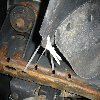WVUexplorer
Member
- Joined
- May 23, 2011
- Messages
- 19
- Reaction score
- 4
- City, State
- West Virginia
- Year, Model & Trim Level
- '92 Explorer XLT 4x4
So i just finished installing new head gaskets and something odd happened. first the engine temp was slowly moving up and down(possible burping issue + i may have turned the thermostat 90 degrees so the breather hole was not up will fix tomorrow) but the big thing is when i took the car around the block the oil pressure gage rose and fell very slowly. it went from perfect center to above the lettering. this is odd because it has never moved before because i believe it is an idiot gauge.
Has any one else had this happen before?
Has any one else had this happen before?










